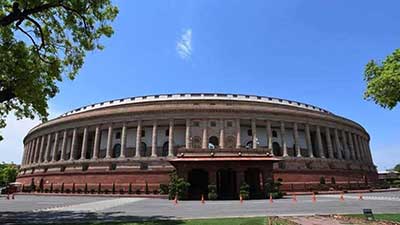Relevance: GS-2: Election of Vice President, powers, functions and responsibilities.
Key Phrases: American Vice-President, proportional representation, electors, proposers, Returning Officer, Ex-officio Chairman, Houses of Parliament, Art 71.
Context:
- The Election Commission recently announced that the poll for the post of Vice-President will be held on August 6 2022, as present vice president term is coming to an end on August 10 2022.
Do you know?
- The post of Vice-President of India is modelled on the lines of American Vice-President.
- Since 1952 when the first Lok Sabha was formed, India has been served by 13 Vice Presidents with Shri M. Venkaiah Naidu currently holding the office.
- Among these 13 Vice Presidents, only 7 were elevated to the position of the President of India.
- Among these 13 Vice Presidents, there are two Vice Presidents who have served the country twice, namely Dr. S Radhakrishnan and Hamid Ansari.
- The first Vice President of India who has been well-known as a scholar, philosopher, teacher, and has been the representative from India at UNESCO is Dr. S. Radhakrishnan.
Election of the Vice-President:
- The vice president is elected indirectly, by an electoral college consisting of members (elected as well as nominated) of both Houses of Parliament, by the system of proportional representation using single transferable votes and the voting is by secret ballot.
- The nomination of a candidate for election to the office of the vice president must be subscribed by at least 20 electors as proposers and 20 electors as seconders.
- Every candidate has to make a security deposit of ₹15,000 (US$200) in the Reserve Bank of India.
- The Election Commission of India, which is a constitutional autonomous body, conducts the election.
- The election is to be held no later than 60 days of the expiry of the term of office of the outgoing vice president.
- A Returning Officer is appointed for the election, usually the Secretary-General of either House of Parliament, by rotation.
- The Returning Officer issues a public notice of the intended election, inviting nomination of candidates.
Qualification:
A person cannot be elected as Vice-President unless he
- is a citizen of India
- has completed the age of 35 years, and
- is qualified for election as a member of the Council of States (Rajya Sabha).
- a person is not also eligible if he holds any office of profit under the Government of India or a State Government or any subordinate local authority.
Is Vice President also impeached as President of India?
- No, unlike President of India who can be impeached formally there is no formal impeachment for Vice President.
- Rajya Sabha simply can pass a resolution with a majority and Lok Sabha can pass it.
Powers and Functions of Vice President
- Ex-officio Chairman: He acts as the ex-officio Chairman of Rajya Sabha. In this capacity, his powers and functions are similar to those of the Speaker of Lok Sabha.
- Acts as President: He acts as President when a vacancy occurs in
the office of the President due to his resignation, removal, death or
otherwise.
- He can act as President only for a maximum period of six months, within which a new President has to be elected.
- Further, when the sitting President is unable to discharge his functions due to absence, illness or any other cause, the Vice-President discharges his functions until the President resumes his office.
Important Articles related to Vice President:
- Article 63 - There shall be a Vice President of India.
- Art 64 - The Vice-President shall be ex-officio Chairman of the Council of States and shall not hold any other office of profit.
- Art 65 - The Vice-President to act as President or to discharge his functions during casual vacancies in the office, or during the absence, of President.
- Art69 - Every Vice-President shall make an Oath or Affirmation on entering upon his office before the President, or some person appointed in that behalf by him.
- Art 71 - Matters relating to, or connected with, the election of a president or vice-president.
A comparison between the Indian and American Vice Presidents
- In the case of America, the Vice President is the successor of the President whenever the office of the President falls vacant for an unexpired term. On the other hand, in India, the Vice President can remain an acting President for 6 months only.
- The powers vested on the Vice President of America are wider as compared to India’s Vice President.
Disputes regarding Election of the Vice-President:
- All doubts and disputes arising in connection with the election of the Vice-President are enquired into and decided by the Supreme Court of India whose decision is final.
- A petition challenging the election of the Vice-President is heard by a five-judge bench of the Supreme Court of India.
- The petition has necessarily to be accompanied by a security deposit of Rs. 20,000.
Conclusion:
- The electors are expected to scrupulously maintain secrecy of vote.
- It is also clarified that political parties cannot issue any whip to their MPs in the matter of voting in the Vice-Presidential election. Hence the election of VP is expected to be impartial as his office is very important one and vital in maintaining the nation’s political unity.
Source: The Hindu
Mains Question:
Q. How election of vice president is conducted in India? Briefly discuss his power. (250 words).







